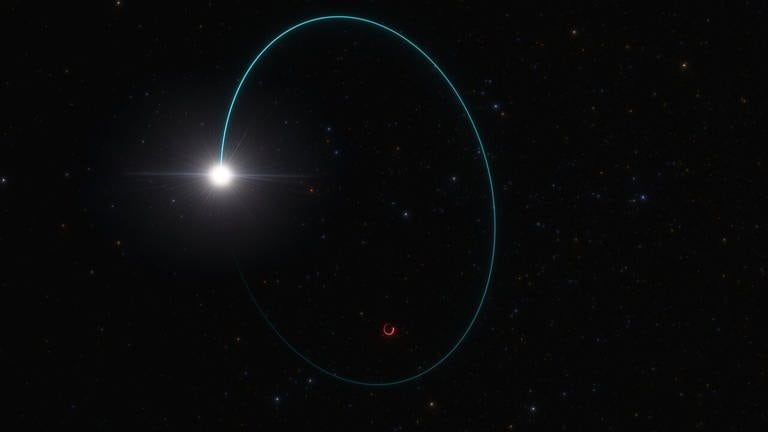Researchers have discovered a black hole 2,000 light-years away. They are amazed at the unusual mass of “Black Hole 3 (BH3)” in the middle of the Milky Way. David Beck from the SWR science editorial team answers the most important questions about this discovery.
Herunterladen audio (4.8 MB | MP3)
The newly discovered black hole is often described as “giant” or “enormous.” What does it mean exactly?
When it comes to such adjectives in space, you always have to ask yourself: Compared to what? The Sun is large compared to Earth, but tiny compared to the largest stars in existence. And that’s how it is here: It’s a pretty big stellar black hole in our Milky Way compared to the others we know.
But there it is: it’s a stellar black hole. This is the smallest category of black holes we know of – there may be smaller ones, but none have been observed yet
Compared to supermassive black holes, stellar ones are really tiny. To be specific: The black hole at the center of the Milky Way has more than four million solar masses and a diameter of almost 25 million kilometers. The stellar black hole now discovered, on the other hand, has just 33 solar masses and a diameter of perhaps 100 kilometers.
What is particularly surprising about the discovery is that, as I said, it is the largest stellar black hole in the Milky Way and is practically in our neighborhood. It is “only” about 2,000 light years away. It’s a bit like if you overlooked the ten-story high-rise in your neighborhood for years among otherwise two- or three-story houses. That would surprise you, but at the same time you know that there are much taller skyscrapers.
BH3 is the most massive stellar black hole yet identified in the Milky Way.
IMAGO/Cover-Images
What does it mean that it’s so close? Do we need to worry?
Here too it helps to compare: The Milky Way has a diameter of around 100,000 light years, so 2,000 light years is relatively close – but that is of course an incredibly long distance for us.
Even if we and the black hole were moving directly towards each other, we would still be in the range of a million years before we would meet. And that certainly won’t happen – at least with this black hole – because it is in a very unusual orbit around the center of the Milky Way and we won’t be getting in the way of it for the foreseeable future – even on a galactic scale.
How was the black hole discovered?
The black hole was discovered by the Gaia space telescope from the European Space Agency. The telescope found a star near the black hole in 2015 – slightly smaller than our sun – and has now observed it for the last nine years.
It was noticed that the star is in orbit around something invisible – and that can only be a black hole. And through observations of the star – how heavy it is, how fast it moves in its orbit – it can then be calculated how heavy the black hole must be.
The black hole lies in an area that Gaia should be observing anyway. But no one could have known beforehand that there would be a black hole.
The black hole is named after the telescope that discovered it, Gaia. Then there is the addition BH3, which stands for: Black Hole 3, the third black hole that Gaia discovered.
